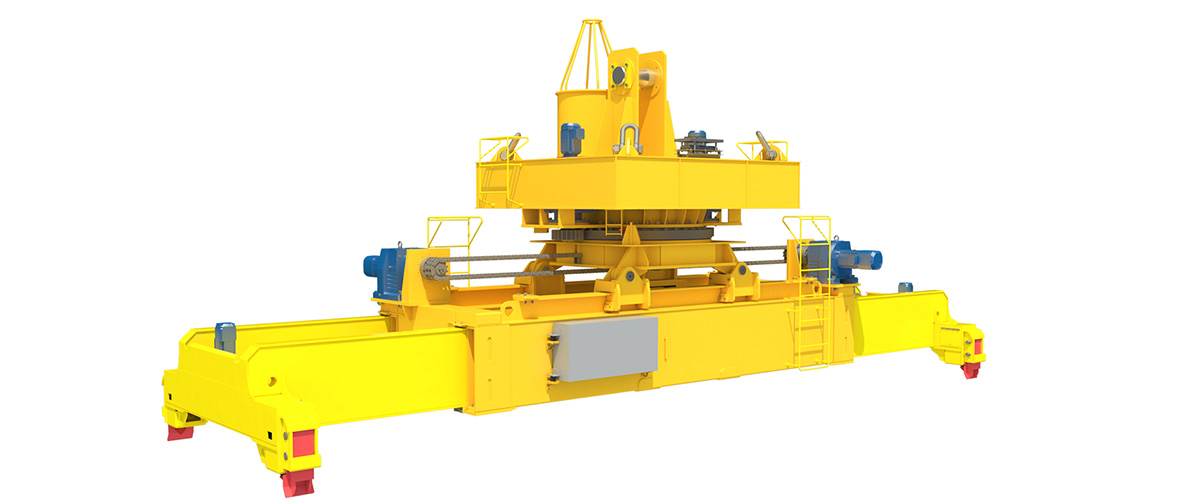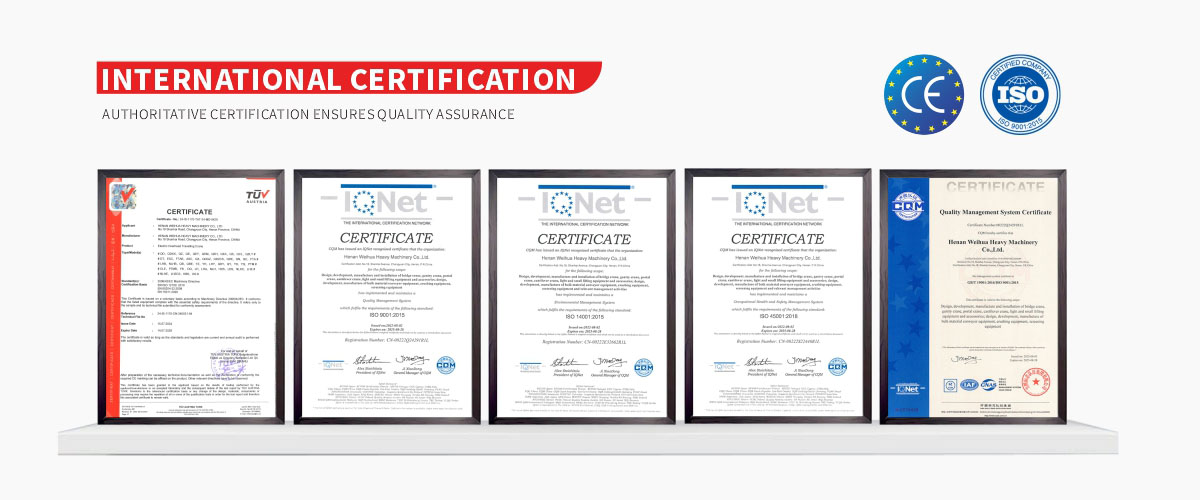


Crane Spare Parts
The container spreader is a key device used to lift containers. Its main function is to lift from the four corner fittings on the top of the container. The structure of the spreader usually includes a metal structure frame, a twist lock device, a guide claw device, etc. According to different needs, spreaders are divided into many types, such as fixed spreaders, telescopic spreaders and rotating spreaders. Fixed spreaders are mainly for containers of specific sizes, while telescopic spreaders can adapt to containers of different sizes by adjusting the length, such as 20-foot, 40-foot and 45-foot containers. In addition, the rotating spreader can rotate the container during the lifting process, making it easier to place it in a specific direction or in a small space.
The working principle of container spreader mainly relies on its internal mechanical or hydraulic mechanism. For example, the telescopic spreader realizes the telescopic action through the reduction motor drive chain transmission. When the telescopic beam reaches the specified position, the limit switch cuts off the power supply to stop the movement. The rotating spreader completes the rotation by driving the pinion of the reduction motor to drive the slewing bearing. These designs not only improve the flexibility and adaptability of the spreader, but also enhance its operation ability in complex environments.
High strength and durability: The frame of the spreader is usually made of high-strength steel to ensure that it can withstand and safely handle containers weighing tens of tons. The choice of materials and structural design ensure the stability and durability of the spreader in long-term use.
Precise locking device: This is one of the most core parts of the spreader, responsible for firmly grasping the four corners of the container during the lifting process. The locking device of modern spreaders is precisely designed to remain highly reliable under different environmental conditions and can adapt to different specifications of container sizes to ensure the safety and efficiency of the loading and unloading process.
Intelligent control system: With advanced intelligent control systems, it can achieve precise control of the spreader operation, including automatic identification of container weight, center position and other information. Some high-end models also support remote control and automated operation, greatly improving work efficiency and safety.
Guidance and positioning function: In order to improve operational accuracy and reduce errors, spreaders are usually equipped with guiding devices. These devices help to quickly and accurately align the position of the container, which is particularly important in high-density container yards.
Strong adaptability: Not only limited to standard-sized containers (such as 20 feet and 40 feet), many spreaders can also adapt to special specifications or non-standard-sized containers by adjusting the locking device, increasing the flexibility and scope of application.

Port terminal: This is one of the most typical application scenarios of container spreaders. In large seaports or river ports, container cranes (such as shore container cranes, rubber-tyred gantry cranes, etc.) are equipped with spreaders to unload containers from cargo ships or load containers onto ships. These devices need to operate efficiently and accurately to cope with busy cargo throughput.
Railway freight station: With the development of multimodal transport, rail transportation has also become an important link in container logistics. In railway freight stations, container spreaders are used to load and unload containers from trains or move containers between different tracks to ensure that goods can be smoothly transferred to their destinations.
Inland logistics center: Container spreaders are also widely used in inland logistics parks or distribution centers. Here, spreaders are used to unpack arriving containers or load goods ready for shipment into containers. This application helps improve logistics efficiency and support rapid commodity circulation.
Yard management: Whether it is a port, railway or inland container yard, spreaders are needed to stack and manage a large number of containers. By precisely controlling the operation of the spreader, efficient stacking of containers can be achieved, storage space can be maximized, and specific containers can be quickly found and retrieved at any time.
Special project transportation: For some oversized, overweight or special-sized goods, customized container solutions may be required. In this case, special container spreaders will safely carry these non-standard-sized containers to ensure the safety of the goods throughout the transportation process.
Automated warehouses: With the improvement of logistics automation, more and more automated warehouses are beginning to adopt automated container handling systems. These systems include highly intelligent container spreaders that can automatically complete container storage and retrieval operations according to preset programs, greatly improving the efficiency and accuracy.
| Container speader technical specifications | |||
| For operation with ISO standard 20’,40’, 45’ and twin 20’ containers | Control voltage | AC 380V/50HZ DC 24V(as agreed) | |
| Total power | ~8KW | ||
| SWL (Concentric/ Single mode) | 40T | Precaution class | IP 55 |
| SWL (Eccentricity / Twin 20’ mode) | 65T | Operating pressure of the system | 120bar |
| Load of lifting lugs at four corner | 19.5t×4 | Ambient temperature | -20℃ ~+55℃ |
| Self-weight (spreader) | ~13t | Twist lock Mode | ISO floating twist lock, driven by an oil cylinder |
| Expansion time (20’to 45’) | ~ 30 S | Telescopic Mode | The telescopic system is driven by means of a hydraulic motor and reduction gearbox connected to an endless chain. |
| Twist lock rotation 90° | ~ 1 S | ||
| Flipper through 180° | 5~7S | Flippers Device | The flippers are drived by hydraulic |
| Power voltage/ Frequency | AC 380V (3P)/50HZ | Application | Portal crane, STS, QC, RMG, RTG |

Please feel free to leave a message. We will reply in 24 hours.
Submit Request